Winning in the AI revolution
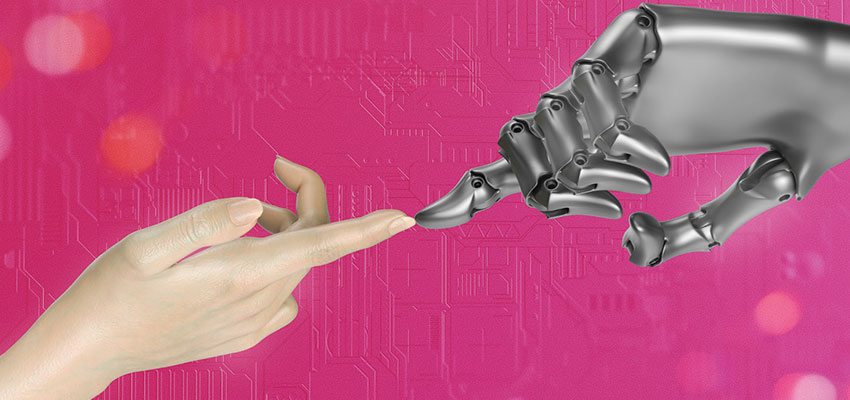
Artificial Intelligence (AI) certainly is all around us, in many ways. Two pioneers of artificial intelligence, John Hopfield and Geoffrey Hinton, have won the 2024 Nobel Prize in physics, for developing machine learning technology using artificial neural networks. Focused more on a business perspective, Soumitra Dutta, who is Peter Moores Dean and Professor of Management, Said School of Business at the University of Oxford, gave an in depth talk on the topic of “Winning in the AI revolution”, at the recently held India Mobile Congress 2024, held in New Delhi. In his talk, Professor Dutta, reflected on what can businesses do and what should businesses do, to win in the AI revolution. Corporate Citizen brings you excerpts from the talk
Exponential change
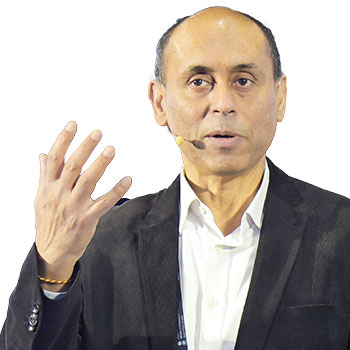
The most important thing, which is happening around us, is change. If you can think back to the year 2000 and say, could I have predicted what life was in 2024? The answer is probably yes for somethings and probably no for many other things. And, the same is true in the world of Artificial Intelligence (AI). If I ask you today sitting in 2024, to make a prediction of what life would be like in 2050, you can make some predictions. May be you will be right, but most likely you will be quite off the mark.
This famous quote by Henry Ford, the founder of the Ford Motor Company “If I had asked people what they want, they would have said faster horses”, explains the challenge of it. If you are used to travelling with horse carriages and someone’s invented the combustion engine, and someone asked the question - What will life look like with combustion engines as the prime driver of vehicles? It would be very difficult for people to even imagine the whole infrastructure of roads, gas stations, socio economic developments like the creation of shopping malls, the creation of suburbs— these were things which people never actually understood, but they evolved over time. The challenge we have right now is, the evolution is happening extremely fast.
Every year I do some research and have published “Global Innovation Index” with the World Intellectual Property Organisation (WIPO), a United Nations agency. And, what we are saying in the last few reports, is that, we have very unique tri-factor of three revolutions. We are seeing the digital revolution when its speeding up. We are seeing a physical revolution in Nano sciences and material sciences. And, we are seeing a biological revolution with the whole genome system, whole development from biology becoming software. You combine the three things - digital revolution, physical revolution and biological revolution—you are looking at tremendous change around us. Now this creates the biggest challenge and the biggest opportunity for organisations.
"Digital technologies, while having great benefits, they are also a great divider. The huge inequality seen in the world around us, is partially driven by technology. The digital divide has in fact increased over the last 20 years"
-Soumitra Dutta
As organisations as human beings, we live in a linear world and we think in linear terms. If I ask you to predict what will life look like in five years’ time, most of us will make linear projection. Conceptually and from human point-of-view, we are not designed to change exponentially, and yet at the same time technology is progressing exponentially. Moore’s law and microprocessors were created roughly in 1960s—today in 2025 we are roughly 65 years into revolution. So, what we are going to see into next 10-20 years, is going to be dramatic. Last 20 years was a slow buildup, next 20 years is going to be a dramatic rise in computational capabilities in data around us. And, that really lies at the heart of the progress we see in AI, in next twenty years—that’s the reason why we have certainly seen so much progress happening in AI, in the last 5-6 years.
Progress of AI
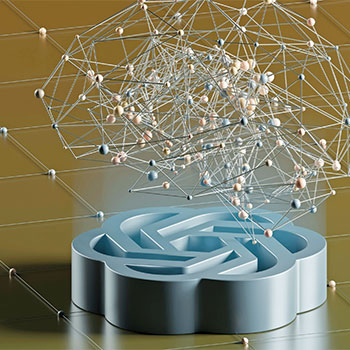
It is good to look at some real data out here in the charts. It is about the very basic capabilities of human beings—what we do is we recognise patterns in data. The pattern could be an image, the pattern could be a sales data pattern, pattern could be machine data design—one of the core things we do to recognise patterns in data. Since about 2017, AI algorithms recognise patterns better than human beings, and this based on benchmarking with standard data bases, in this case ImageNet, which is one of the biggest data bases of publically collected images. And, you have to see and compare how the humans do and how machines do.
Machines today recognise data better than human beings—end of story. Especially if it is multi-dimensional complex data, like from a ship, or from a plane, or from a factory, or from something more complex. That’s the reason why in many countries they don’t use human beings anymore, because human beings can in fact make mistakes than machines.
Now the interesting thing is, how well can machines answer questions? You can take an image, show it to a human child or adult, and ask questions about what they see in it. Can the human being interpret that data— interpretation of cartoons basically. What you see is, since 2021, machines are doing it better than human beings. Again this is really benchmarking done with data.
Now for long time, natural language was extremely difficult for machines, because when we speak in natural language, we use a lot of ambiguous terms. For example, I give a sentence “The old man glasses were broken”. You immediately understand that glasses in this case refers to reading glasses and not drinking glasses. The word glasses, is ambiguous. How do we know its reading glasses? Because, with age your eyesight becomes weaker and we know that old people like to read. We know from experience that one way to correct eye sight is wearing glasses. So, we put all this knowledge to understand a simple sentence. Capturing that common sense knowledge was extremely difficult for AI for long time. And then, with more congregational power available and the World Wide Web, and the invention of transforming of technology, essentially what has happened is, handling natural language has become so much easier and so much more effective. So, its only since 2021, in last two three years that the natural language capability of AI has surpassed human beings.
And, similarly like from images, you can also ask people to make inferences from text, when you happen to give a piece of text and ask a human being to infer, to bring conclusion and logical reasoning. Since 2022, its only in last two years that AI has become as good or slightly better than human beings. So, all I want to give a sense out here is that in a core area of recognising patterns, interpreting patterns, whether its data or language, machines of today are doing it better than human beings.
Now you might say recognising patterns is fine, what about creativity? At one level creativity is about creating another pattern— pattern of data, pattern of words, form pattern of creatives. And, today what you are finding is that AI systems are becoming better and better at suggesting patterns. In many industrial designs, the industrial designs look at possible suggestions of machine parts and combines them.
In fashion design, the classical area where human creativity is so much valued, increasingly the software looks at images of people, of preferences expressed—suggesting to the designers that this is what you should design, suggesting this colour or whatever. The human designer is more and more co-working with the machine. In some cases, the machine is actually suggesting what the human designer is finding it better—that’s the reality. The creativity getting where machine is increasingly working with human beings, is improving constantly. Keep in mind always, that exponential curve— the recent progress in inferences in last 2-3 years. What will happen in next 5-10 years in creativity is difficult to predict, but most likely the proceed is quite well.
"I always say that the secret of leadership is not necessarily having a right answer, but it’s about being able to ask the right questions"
One might say its fine with creativity, but human beings are good at relationships and they can form relationships. You might have heard of this Chinese bot called “Xiaoice”, it is girlfriend to more than 60 million Chinese males. This is a real life version of a very well known Hollywood movie called “Her”, in which the main actor falls in love with the operating system. And, this is really true right now. This might seem like a funny example, but kinds of bots today that form emotional bonds, are being used in real-life cases of giving advice to psychologically challenged teenagers or the people with mental conditions. Because, in mental conditions, forming bonds can be quite challenging for humans to do it professionally, but machines can do it quite well. Teenagers are finding it easier to deal with machines than their parents or teachers. So, if you look at the three kinds of categories - interpreting and recognising patterns, creating patterns of creativity, forming bonds and relationships, machines and AI are becoming pretty good at all of that. So, the range of tasks that AI can handle is increasing significantly.
Impact of AI
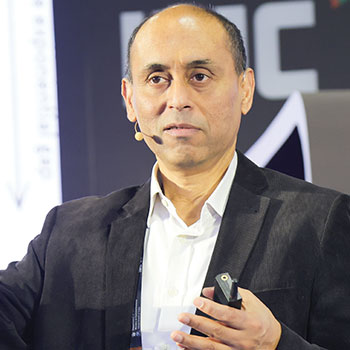
AI is today everywhere around us—all of us have mobilephones and the applications we use on our mobilephones, almost all of them are using AI in one form or other. There is a lot of AI going into Google Maps. Ecommerce vendors like Amazon—lot of AI is going into tracking purchasing behaviours.
You can conceptualise how AI is impacting business with three simple dimensions. They are not the only possible way of conceptualising it, but I have found it useful. For example, the classical use of AI, which is classical automation - automated cars and automated processes. AI can automate so many things that human beings do today—you increase the efficiency, you decrease the cost, increase the quality, decrease time. AI is speeding up things dramatically.
We had Stéphane Bancel, CEO of Moderna, who recently gave a talk at Oxford, and I asked him how AI is changing their business at Moderna, which is a vaccine producer. He said that of course it is happening in pieces of it, but for some of the pieces what took us two months to do, we can do it now in three minutes. For example, the speedup of regulatory filings—to file regulatory processes can be very cumbersome—AI just speeds up the whole process.
I was talking to a young lawyer in London and he was talking about his job. He was saying that he would spend his day going to the emails of the clients, find and identify phrases and texts linked to the case at hand. He said that AI today can analyse thousands of emails, analyse that kind of content you are searching for and do it in a matter of minutes. So, efficiency can be increased dramatically out here.
Talking about pain points—as customer or employees we always have frustration for something, and that something has got easier, better and simpler. For shopping, we got tools that have made choosing things easier and simpler—Amazon has made it easier and simpler. Choosing movie is simpler—Netflix made it simpler. I could choose different things in an easy way. So, making life simple for employees and customers—another great application—you find the pain points and try to solve it.
"What you have is a dual challenge in AI. One hand you have your current organisation, you have to keep on improving it. On the other hand, the future could be very different and you got to explore the future, you have to invent the future"
Can you use AI to innovate and do new things?
Going to new markets, creating products and creating new services, that can be quite dramatic. For example, lets say I am at Oxford, today we teach around 15,000 students who come to the campus. Can I use AI to create some versions of faculty and faculty directions and knowledge, so that I can touch millions of students—that will be a new market. I might be able to touch millions of students in Asia and Africa, with different price points and different mode of interaction, and still deliver value there. And, that would be innovation for business that I am in. Similarly, I am sure you can find innovations in your own business points. So, there are lot of different areas in which AI can impact businesses.
Strategic leadership of AI
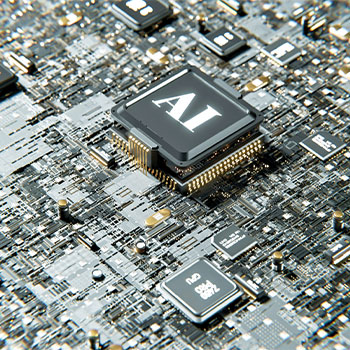
The essence of the challenge in leadership is not technology, it is culture—that is the core challenge. Why do I say this? Because, if you look at innovation in any organisation, you have roughly two dockets. Some which are small innovations, what can be done with this incremental innovations; and some which are big innovations, which need dramatic changes and are disruptive in many ways. Now the challenge is, the cultures required for the two types of innovations are very different.
What kind of a culture is required for disruptive innovation? It is very much the typical startup culture — flexible, organic, risk taking, high tolerance of failures, do more R&D, be entrepreneuring—that’s the kind of culture required for disruptive innovation. For incremental innovation, the culture required is much more formal organisation, more structured processes and more of a focus on goals and rules, focus on quality and efficiency and focus on management skills. Its really a production driven kind of environment—a culture that focuses on incremental steps while improving, and does not want huge steps because it disrupts the entire system.
Unless you are a startup, the cultural core of most large organisations, is where you have the big challenge. AI will disrupt your organisation culturally if you are not prepared for that. And, the challenge for organisations is how you devote, because if you are large organisation running a business, you cannot say I will stop doing what I am doing. You have to keep on doing what you are doing, and the same time you have to find the new things that are possible. I have to keep doing and keep improving today, yet if I want to be disruptive, I would say what else can I do in a different innovative way.
So, what is impossible strategies out here?
One simple strategy that you need, is to spend time exploring the future, more in a structured fashion. You have approaches like scenario planning that people use, and is something that is recommended. Certainly explore what are the possible disruptive forces and its impact, and imagine what the future could look like. Build some scenarios of the future—that is just a way of structured brainstorming. Scenario planning is not new, it is a technique from 50-60 years ago, extremely popular right now. People use it all the while because we are having lot of uncertainties in the environment right now — How will geopolitics affect business? How will technology affect business? So, the strategy of structured brainstorming and exploring more is one thing.
Now the strategy more important is, question more.. In every organisation we have these sacred cows, we have these assumptions— that’s the way it is done for long time and we don’t really challenge everything. For those who are familiar with cybersecurity, you know of this concept of blue and red teams. The blue team builds the cybersecurity defences and the red team is the internal team of high calibre people that can break down what the blue team is doing. So, in fact what is happening in this red team is a whole strategy of questioning what you are doing. And, you will be asking all the questions that need to be asked about the unquestionable and challenge everything. Doing this systematically is not easy—you have done it in cybersecurity, doing in the business side is not very common, and that’s another thing you can do. And, the most important strategy here is, you learn faster. Typically, what you have is a dual challenge in AI. One hand you have your current organisation, you have to keep on improving it. On the other hand, the future could be very different and you got to explore the future, you have to invent the future.
"What we are going to see into next 10-20 years, is going to be dramatic. Last 20 years was a slow buildup, next 20 years is going to be a dramatic rise in computational capabilities in data around us"
How do you create the future as an experiment?
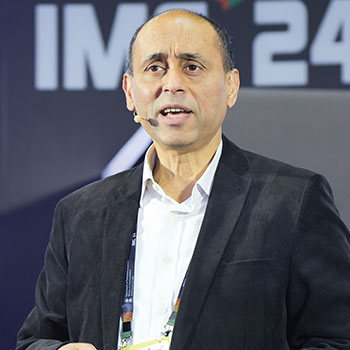
So, you have to have a number of experiments going, on what the future could look like and then connect the two. The challenge out here is; how do you learn fast enough about these experiments. And, there are two basic strategies out here - one strategy is you do an inside-out approach, in which you encourage people inside the organisation to come up with new kinds of ideas and new scenarios. Many companies for example have innovation fairs, marketplaces, corporate venturing, and give time for people to set-up new businesses. So, you can try your internal resources and people. Or, you can use an outside approach, which is much more— look at acquisition, look at startup, outside other companies, and work with them; form alliances, build partnership and acquisitions. You have to do both—most companies do both, but the preferred approach, when you have high rate of disruption is outside, simply because it is faster. Speed becomes the critical factor—of course when you bring in different business model from outside, different culture, into the company, you have the challenge of integration. The cultural integration again comes, not easy but in terms of speed where rate of learning is always faster when you look outside. So, what many companies are doing right now is, if you want to learn faster, you are looking outside much more actively.
Questions to ask
I always say that the secret of leadership is not necessarily having a right answer, but it’s about being able to ask the right questions. So, if you look at the organisational perspective, let’s say you are a CEO or leader of a company, what are some possible questions to ask. When I work with CXOs or leaders in organisations I often begin — because AI and technology can be quite difficult to understand, it can sometimes be threatening for people. What I often say is, just think of four simple questions:
What is your biggest cost factor?
What is your biggest people pain-point for your customers or employees?
What could be the ideal product you will design for your current market and current customers?
What would be a new market that you want to serve and how will you serve it?
Asking these four questions, you start the process of getting people think about the business first. Then to solve it, AI comes into the picture. Invariably technology will be part of the solution. But, if you begin with technology first, it just leads to a wrong kind of discussion—you get lost into all kinds of technology questions and jargons. So, from a business point of view, I find it useful to just get people to focus on these four simple business questions and then use that to come to the applications, which will be along the three dimensions — automation, simplification and innovation. That is the way of approaching.
There are lots of bigger questions of AI and here are three of them:
How do you distribute the benefits of AI equally? This inequality happens in all levels inside the country, parts of the country that are more wealthy, in cities where people are more wealthy and more educated, as compared to the villages. In India basically lot of people live in less developed parts of the country.
Globally, today literally there are less than five countries that are leading in AI research. So the question really is, if only small number of countries are dominating the leading edge of technology, what happens to the rest of the countries? What kind of impact it will create in terms of equality in the world?
Digital technologies, while having great benefits, they are also a great divider. The huge inequality seen in the world around us, is partially driven by technology. The digital divide has in fact increased over the last 20 years. As opposed to the fact, people think that because of mobilephones usage digital divide is gone, but that’s not true at all. In fact, the gap has increased.
How do you ensure that people infer meaning from bias? I showed you earlier that technology is increasingly doing more and more. How do you actually build a system that brings human beings and technology together? Ultimately we need human beings, they cannot just disappear. The 8+ billion people in the future—what do we do with all these people? Especially in an environment where we are trained and educated to have jobs as a very important corner stone for our identity and dignity. Having a job is seen as — you are human being and to able to provide your family, you have to have a job. If you don’t have a good job or don’t have a job at all, what would we do with such a victim? A very important question, for politicians and especially for large economies and large population like ours.
How do you develop AI with out endangering human safety? Because, it is true at some point, AI will probably become more intelligent than human beings. We make an assumption that the human being will do the right thing—flick the switch off, when machines become too dangerous. But, the machine is more intelligent than human being, the machine will be able to convince the human being, not to flick the switch off.
"The companies and the countries that use more technology will some how get benefits of increased business and that will be good—but after ten years I don’t know, unless we work all together"
However, the next ten years are going to be wonderful years. Why because the more AI we use, the better it’s going to be. And, the next ten years I don’t think there will be huge risk of job losses, if you have the right environment for businesses. I will give you one recent study, looking at the docking of ships in the ports on east-coast of the US and west-coast of the US. It so happens for number of reasons, the east coast ports of America are less automated and the west-coast ports of America are much more automated. So, logically you would say, ports with more automation would have less jobs and more layout, but the reverse is being shown. In fact, it is shown that the west-coast ports have more jobs and there is more business coming there—there are more ships coming out there because it is more fast and cheap to dock out there. What we find is that the companies and the countries that use more technology will some how get benefits of increased business and that will be good—but after ten years I don’t know, unless we work all together.